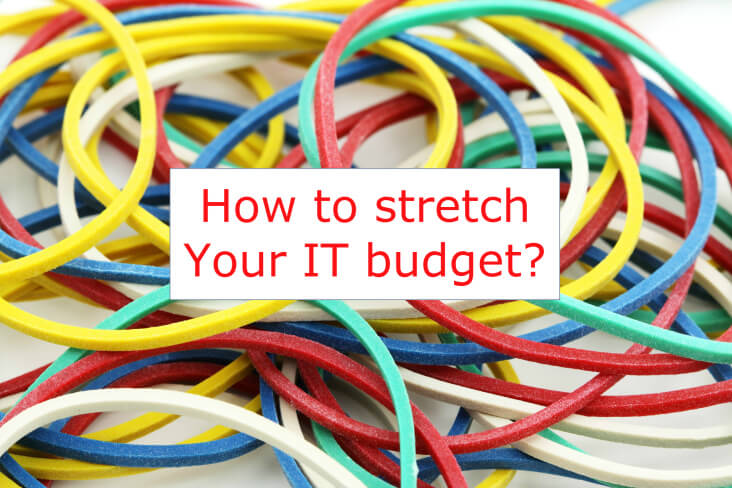Keeping pace with today’s intensely competitive business environment demands an IT function that is responsive and efficient. Today, we need technology that transforms the business – achieved with a smaller budget. So how do you stretch your IT budget without losing efficiency?
Here are 5 techniques to deal with your budget. Don’t miss the opportunity to download our guide and access 20 tips to stretch your IT budget.
Download our guide
“How to stretch your IT budget”
[maxbutton id=”5″]
Review Sources of IT infrastructure cost
A good starting point would be to reassess your current IT expenses. Determine what you truly need. List what’s necessary, what’s optional, and what you can eliminate. It’s common for businesses to buy the latest and greatest technology without putting it all to use. Perform an audit of everything contributing to your technology expenses to give you a good idea of what’s really necessary. While upgrades are important, it’s often possible to get by without being fully up-to-date on everything.
Minimize Spend
Cut power consumption from mechanical and electrical equipment by looking at newer energy-efficient approaches to data center designs that take up less space, utilize less power and cost much less. Streamline the allocation of costly labor and support delivery by driving calls down to the lowest tier level that can satisfactorily resolve users’ issues. Ensure to implement standard practices to improve service management and quality. Review and renegotiate telecom service contracts and network claims from market vendors. Discounts on certain services can yield some serious benefits. IT Vendors naturally want to keep clients on board, many are willing to come up with agreeable payment plans for both parties. Try to bundle packages with fewer vendors to simplify operations.
Consolidate, Virtualize and Optimize for Efficiency
Enable your IT department to do more with less by consolidating infrastructure and operations. Encourage virtualization of hardware which translates into lower operating depreciation costs and less-expensive maintenance and support. Virtualization can be applied to many platforms: UNIX servers, storage, networking and client computing.
Enhance IT Asset Management
Tracking and analyzing your assets and how you’re using these helps you identify areas that offer additional opportunity to reduce IT infrastructure cost. Asset management tools determine the life of certain assets, defer upgrades and eliminate or combine software licenses, as well as replace certain maintenance service contracts with a time-and-materials approach.
Asset Management can strategically pick and choose exactly the right combination of sources and you could devise SLAs directly-tailored to your company’s IT and overall goals. It’s a recipe for quality and flexibility.
Plan Ahead for a Brighter Future
A key part of effective IT cost reduction strategies is to actually plan ahead and equip your IT teams so that they can handle future business challenges in areas ranging from personal IT support to mobile applications to cloud computing. Align IT with the business and vice versa by being proactive and not reactive.
